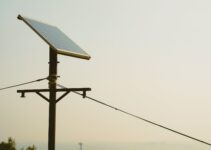Electric vehicles have gained significant popularity in recent years, and Tesla has emerged as one of the leading manufacturers in the industry. As a Tesla owner or someone considering purchasing one, you may have wondered if it’s possible to charge a Tesla with a generator.
In this article, we will explore the compatibility of generators with Tesla’s electric vehicles, the pros and cons of using a generator for charging, factors to consider when choosing the right generator, a step-by-step guide to charging a Tesla with a generator, tips for optimal performance and safety, and a comparison between generators, solar panels, and electric car charging stations for Tesla.
Understanding the Compatibility of Generators with Tesla’s Electric Vehicles
Before we delve into the details, it’s important to understand the compatibility between generators and Tesla’s electric vehicles. Tesla vehicles come equipped with a built-in charger that is designed to work with standard electrical outlets. However, charging a Tesla with a generator requires additional considerations.
Generators produce electricity by burning fuel, such as gasoline, diesel, or propane. They convert mechanical energy into electrical energy, which can then be used to power various devices, including electric vehicles. However, not all generators are compatible with charging a Tesla.
In order to charge a Tesla, the generator must meet certain requirements. Firstly, it should have sufficient capacity to handle the power demands of the vehicle. Tesla vehicles typically require a 240-volt power source for efficient charging. Additionally, the generator should provide a clean and stable power output to ensure the safety of the vehicle’s sensitive electronics.
Exploring the Pros and Cons of Charging a Tesla with a Generator
Like any power solution, charging a Tesla with a generator has its advantages and disadvantages. Let’s take a closer look at the pros and cons:
Pros
- Portability: Generators offer the advantage of portability, allowing you to charge your Tesla wherever you have access to fuel.
- Emergency Charging: In case of power outages or when traditional charging options are not available, a generator can serve as a reliable backup power source.
- Versatility: A generator can be used for various purposes other than charging a Tesla, making it a versatile power solution.
Cons
- Noise and Emissions: Generators can be noisy and produce emissions, which may not be ideal for environmentally conscious individuals.
- Fuel Dependency: Charging a Tesla with a generator requires a constant supply of fuel, which can be an additional expense and inconvenience.
- Efficiency: Generators are not as efficient as dedicated charging stations or solar panels, resulting in potentially longer charging times and higher energy costs.
Choosing the Right Generator: What to Consider for Efficient Tesla Charging
When selecting a generator for charging your Tesla, there are several factors to consider:
1. Power Output
The generator should have sufficient power output to meet the charging requirements of your Tesla. Most Tesla vehicles require a 240-volt power source, so ensure that the generator can provide this level of voltage.
2. Clean Power Output
To protect your Tesla’s sensitive electronics, it’s important to choose a generator that provides clean power output. Look for generators with low total harmonic distortion (THD) to minimize the risk of damaging your vehicle’s electrical components.
3. Fuel Type
Consider the fuel type that best suits your needs. Gasoline-powered generators are widely available and offer good performance, but they can be noisy and produce emissions. Diesel generators are more fuel-efficient and provide a longer runtime, but they tend to be more expensive. Propane generators offer cleaner emissions but may have a lower power output.
4. Portability
If you plan to use the generator for charging on the go, consider its portability. Look for models with built-in wheels and handles for easy transportation.
Unleashing the Power: Step-by-Step Guide to Charging a Tesla with a Generator
Now that you understand the compatibility and have chosen the right generator, let’s walk through the steps to charge your Tesla:
- Ensure Safety: Before connecting your Tesla to the generator, make sure both devices are turned off to avoid any electrical accidents.
- Prepare the Generator: Set up the generator in a well-ventilated area, preferably outdoors, to prevent carbon monoxide buildup. Follow the manufacturer’s instructions for starting and operating the generator.
- Connect the Charging Cable: Plug one end of the charging cable into the generator’s power outlet, and the other end into your Tesla’s charging port.
- Start the Charging Process: Turn on the generator and then activate the charging process on your Tesla’s touchscreen display. The vehicle will communicate with the charger and adjust the charging rate accordingly.
- Monitor the Charging Progress: Keep an eye on the charging progress through your Tesla’s touchscreen display. It will provide real-time information about the charging rate, estimated time to full charge, and other relevant details.
- Complete the Charging: Once your Tesla reaches the desired charge level, you can disconnect the charging cable and turn off the generator.
Generator Setup Tips: Ensuring Safety and Optimal Performance while Charging a Tesla
To ensure safety and optimal performance while charging your Tesla with a generator, consider the following tips:
- Read the Manuals: Familiarize yourself with the user manuals for both the generator and your Tesla. Understand the safety precautions, operating instructions, and any specific recommendations.
- Proper Ventilation: Always operate the generator in a well-ventilated area to prevent carbon monoxide poisoning. Avoid using it indoors or in confined spaces.
- Grounding: Properly ground the generator to protect against electrical faults and ensure safe operation.
- Regular Maintenance: Follow the manufacturer’s maintenance schedule for the generator to keep it in good working condition. This includes oil changes, filter replacements, and overall inspections.
- Use High-Quality Cables: Invest in high-quality charging cables that are compatible with your Tesla. This will ensure efficient power transfer and reduce the risk of electrical issues.
Alternative Power Sources: Comparing Generators, Solar Panels, and Electric Car Charging Stations for Tesla
While generators can be a convenient power solution for charging a Tesla, it’s worth exploring alternative options as well. Let’s compare generators, solar panels, and electric car charging stations for Tesla:
| Power Source | Advantages | Disadvantages |
|---|---|---|
| Generators | – Portability – Emergency charging – Versatility |
– Noise and emissions – Fuel dependency – Lower efficiency |
| Solar Panels | – Renewable energy source – Environmentally friendly – Lower long-term costs |
– High upfront investment – Weather-dependent – Limited charging during nighttime |
| Electric Car Charging Stations | – Dedicated infrastructure – Faster charging times – Convenience |
– Installation costs – Limited availability – Dependency on external power grid |
Frequently Asked Questions about Can You Charge a Tesla with a Generator?
Q: Can I charge my Tesla with any generator?
A: Not all generators are compatible with charging a Tesla. It’s important to choose a generator that meets the power requirements and provides a clean power output.
Q: How long does it take to charge a Tesla with a generator?
A: The charging time depends on various factors, including the generator’s power output, the Tesla model, and the current charge level. It can range from a few hours to overnight charging.
Q: Are there any safety precautions to consider when charging a Tesla with a generator?
A: Yes, it’s crucial to follow safety precautions when charging with a generator. Ensure proper ventilation, avoid operating the generator indoors, and familiarize yourself with the user manuals for both the generator and your Tesla.
Expert Advice
When considering charging a Tesla with a generator, it’s important to evaluate your specific needs and circumstances.
While generators offer portability and emergency charging capabilities, they may not be the most efficient or environmentally friendly option. Explore alternative power sources such as solar panels or electric car charging stations, which may provide more sustainable solutions in the long run.






